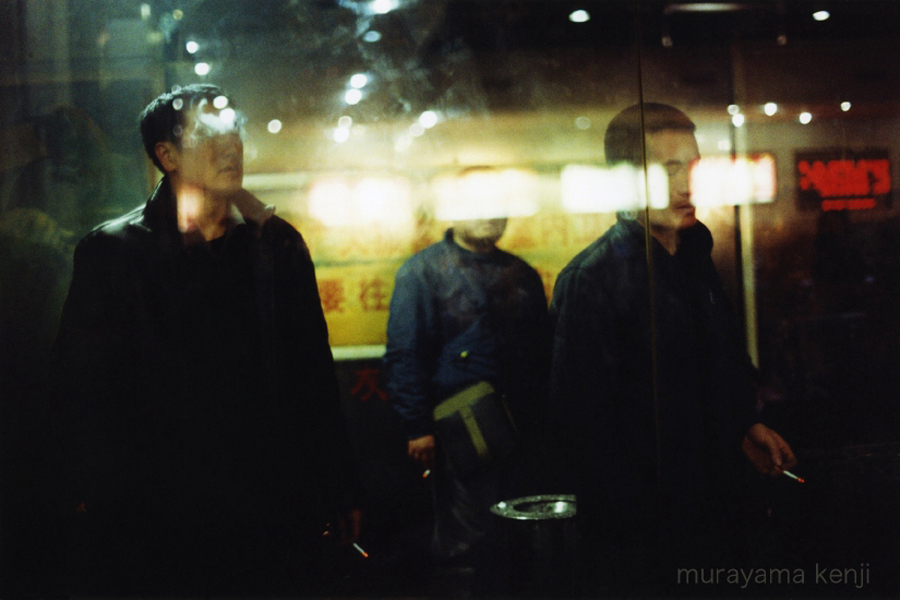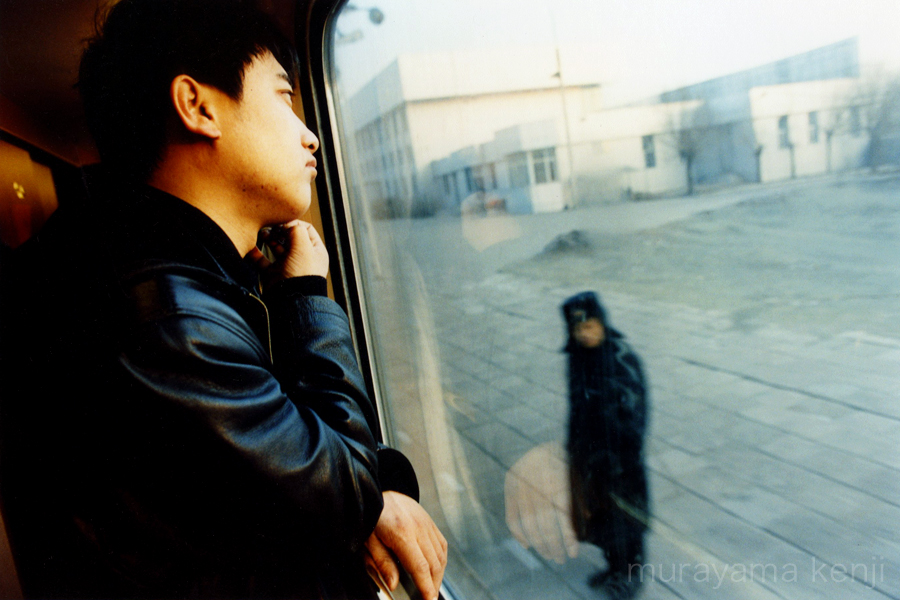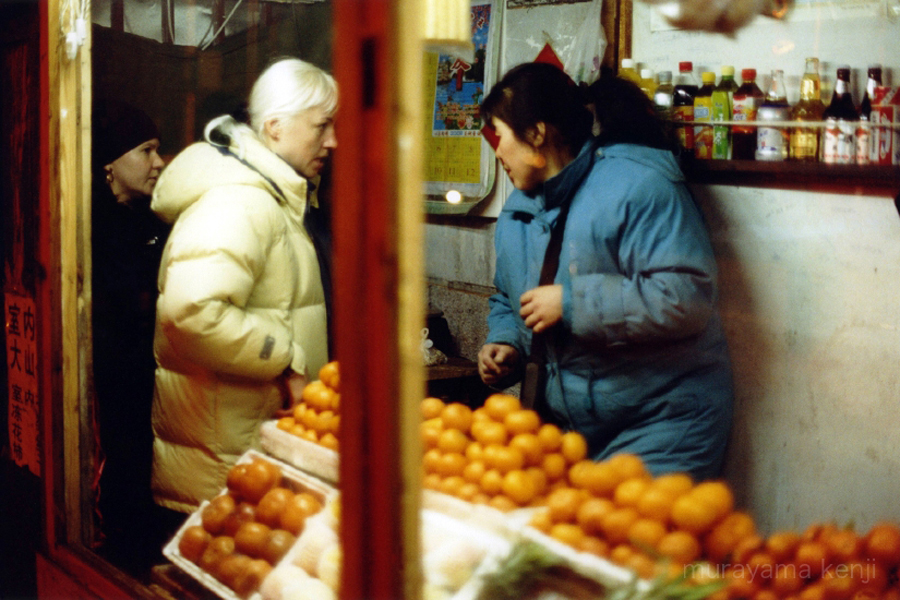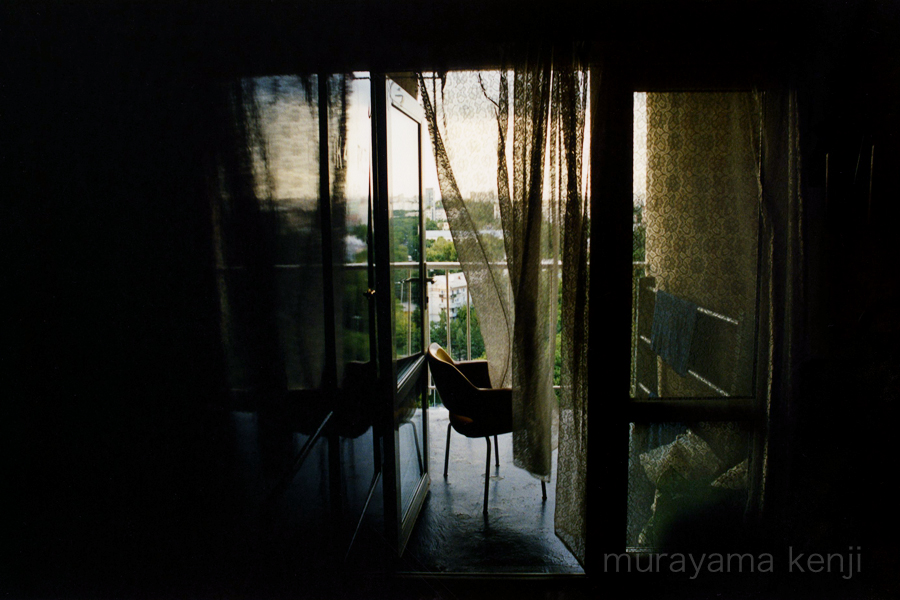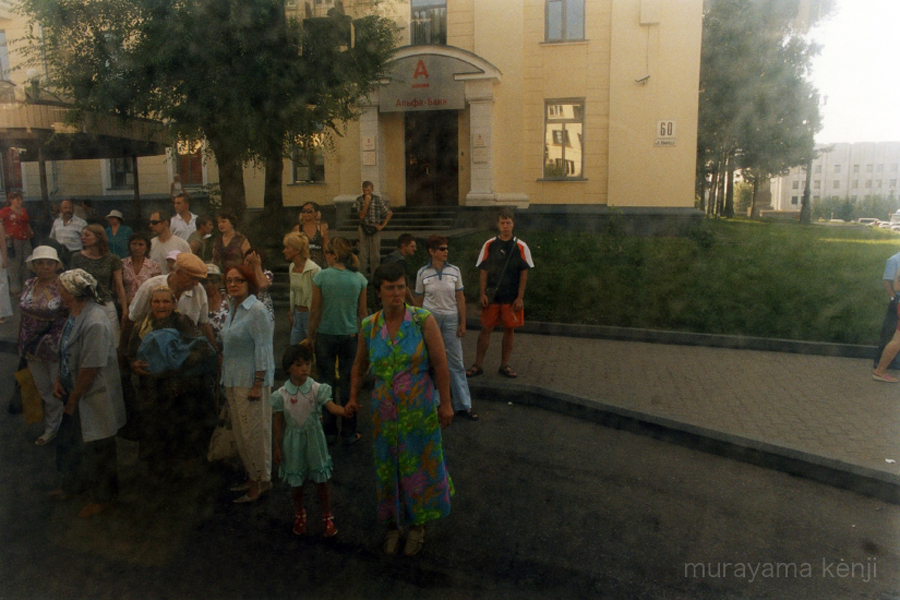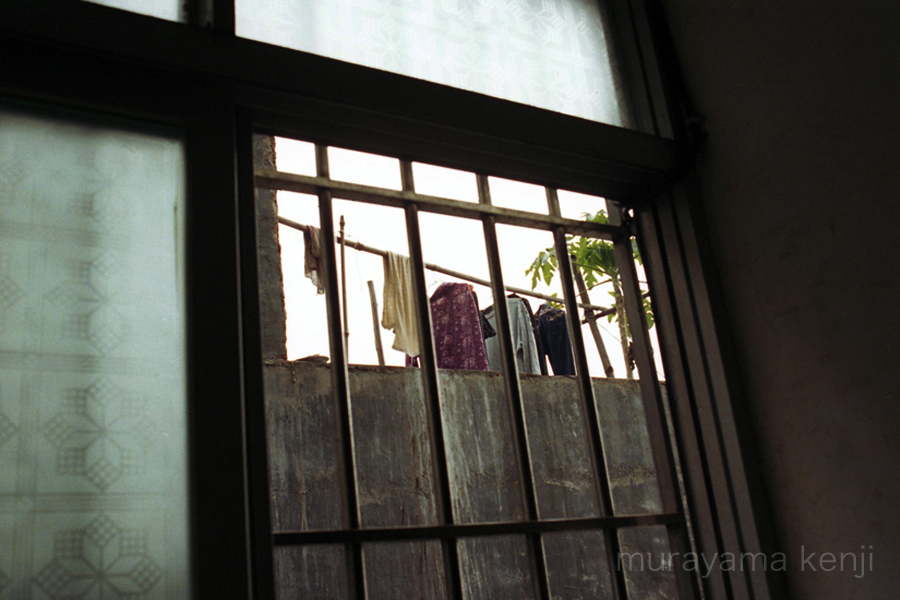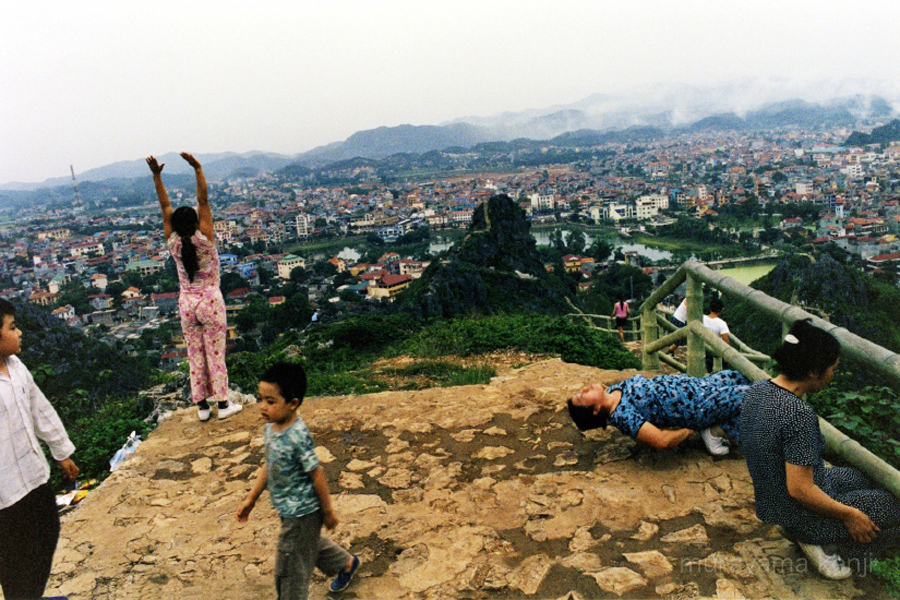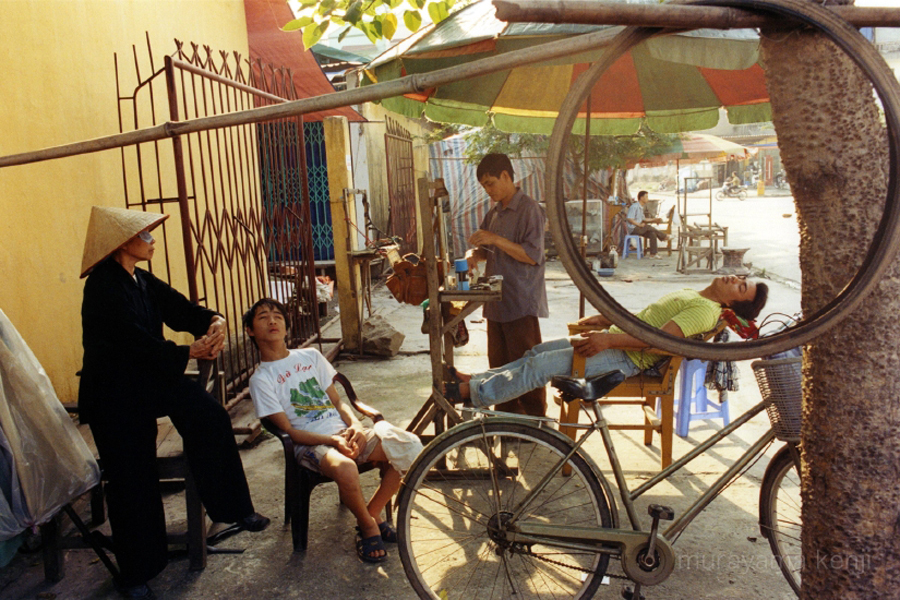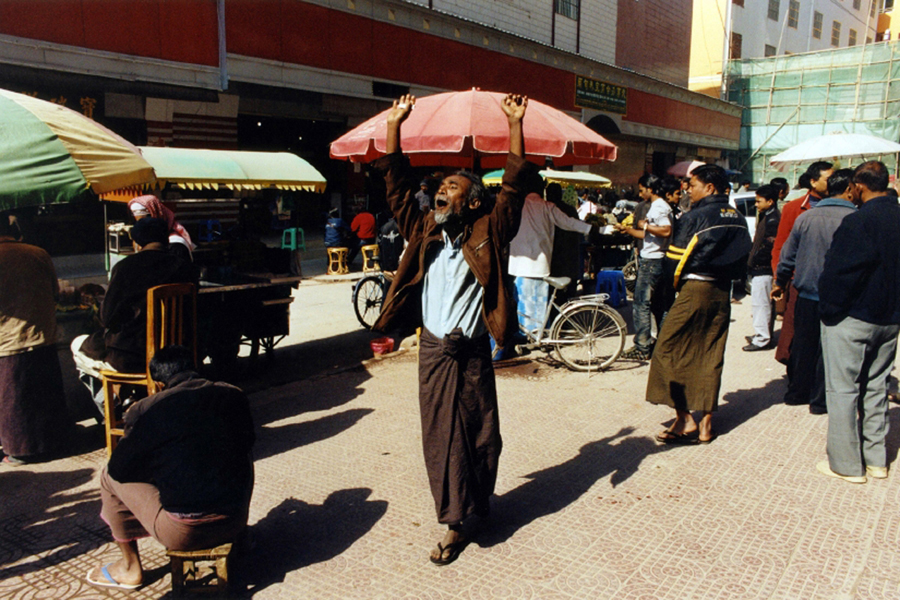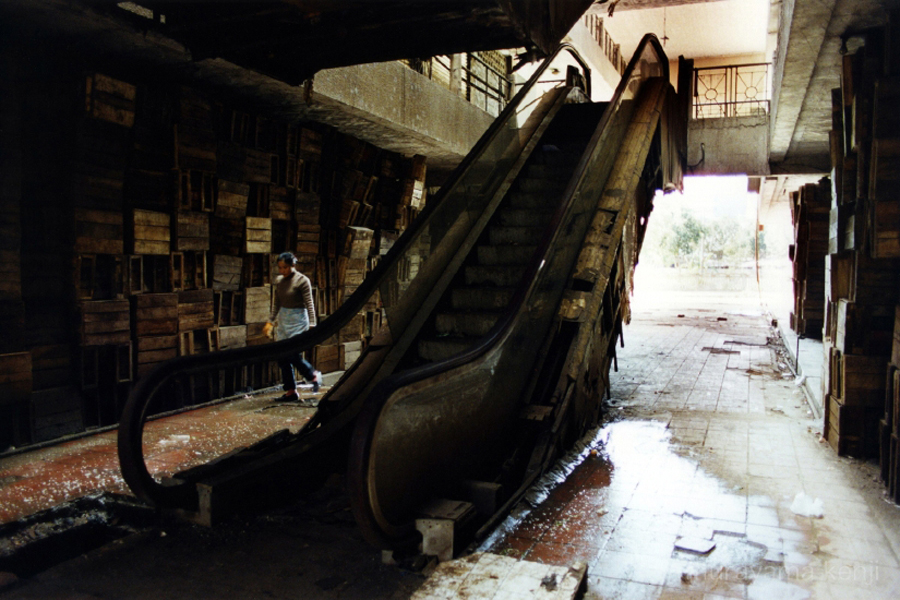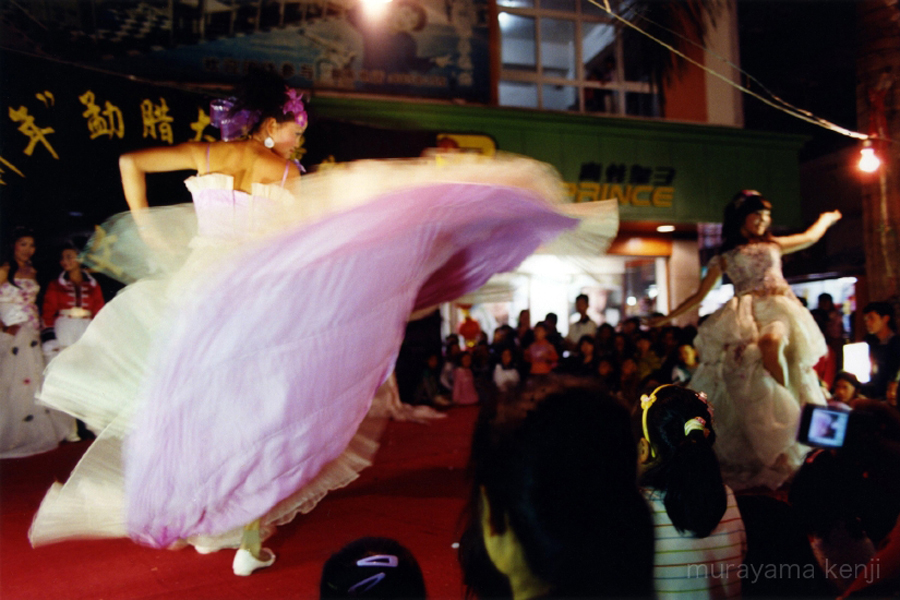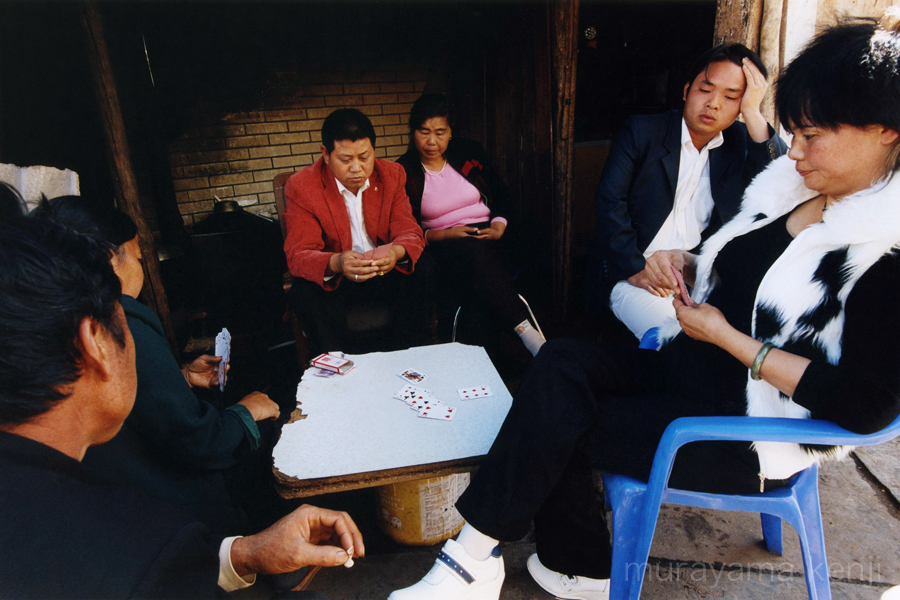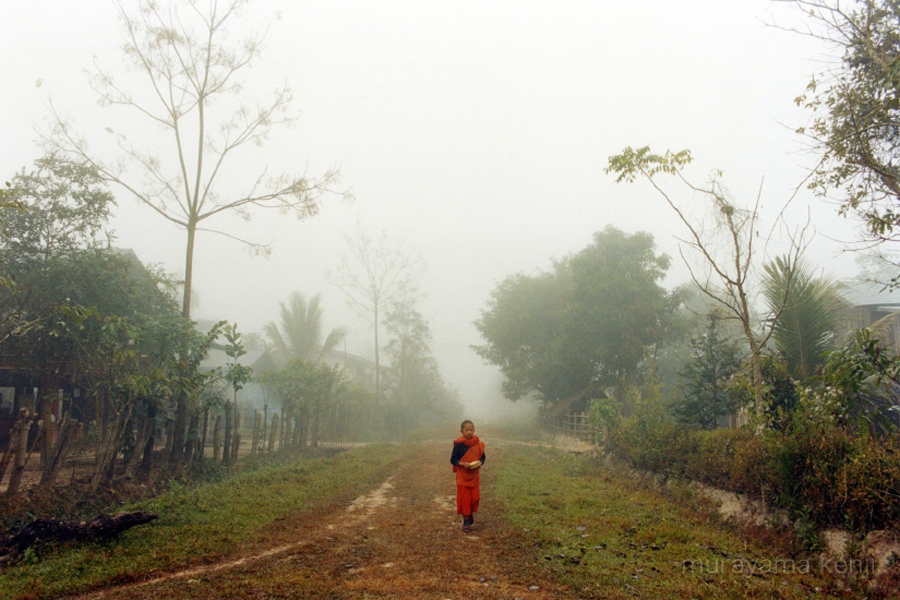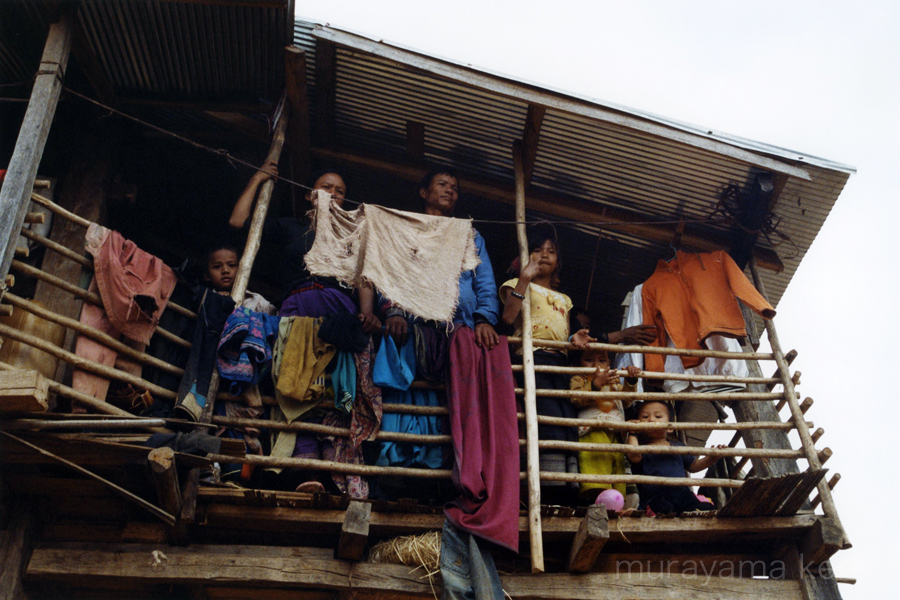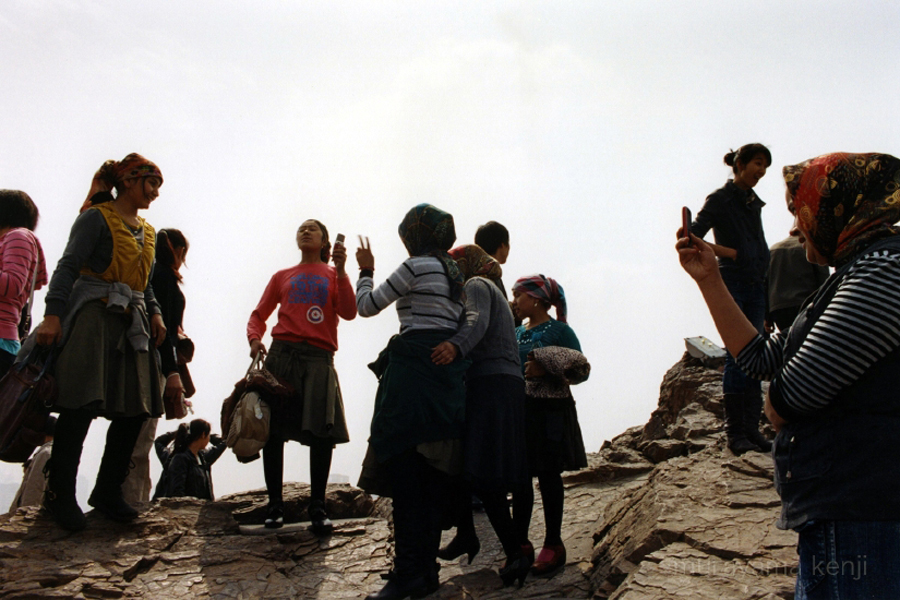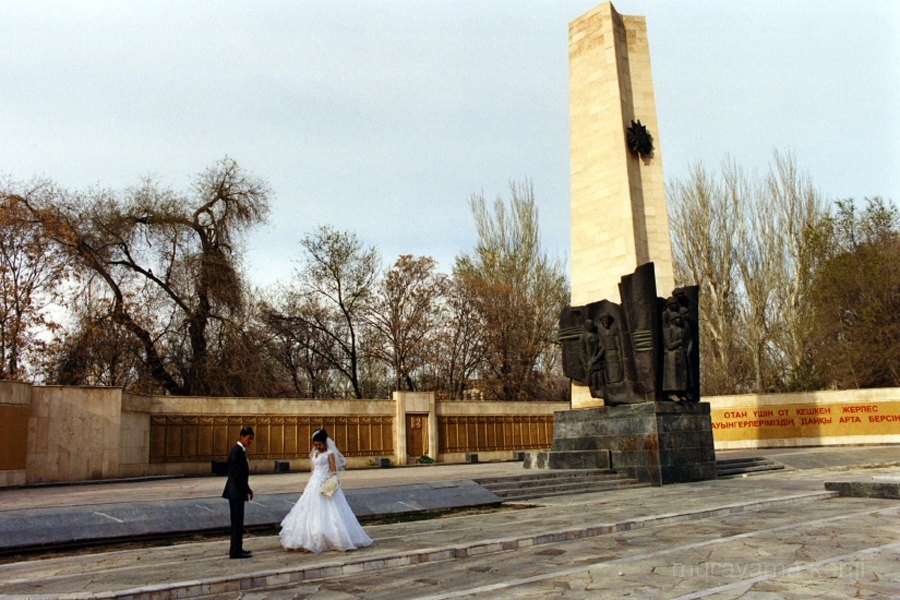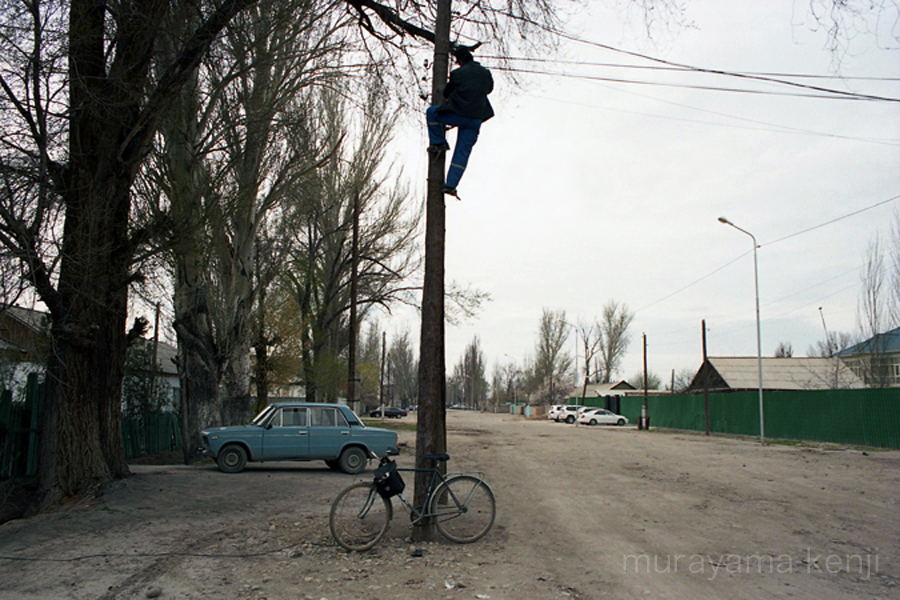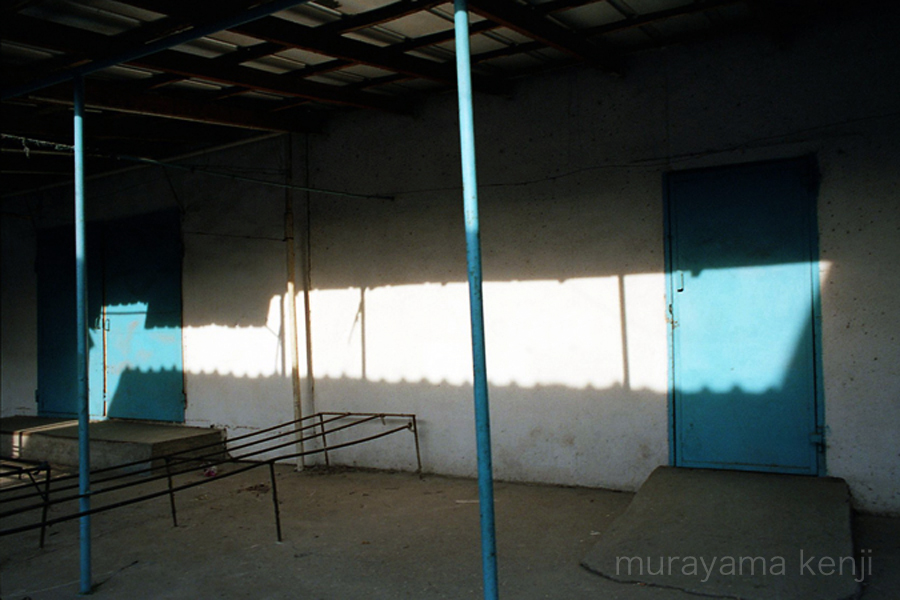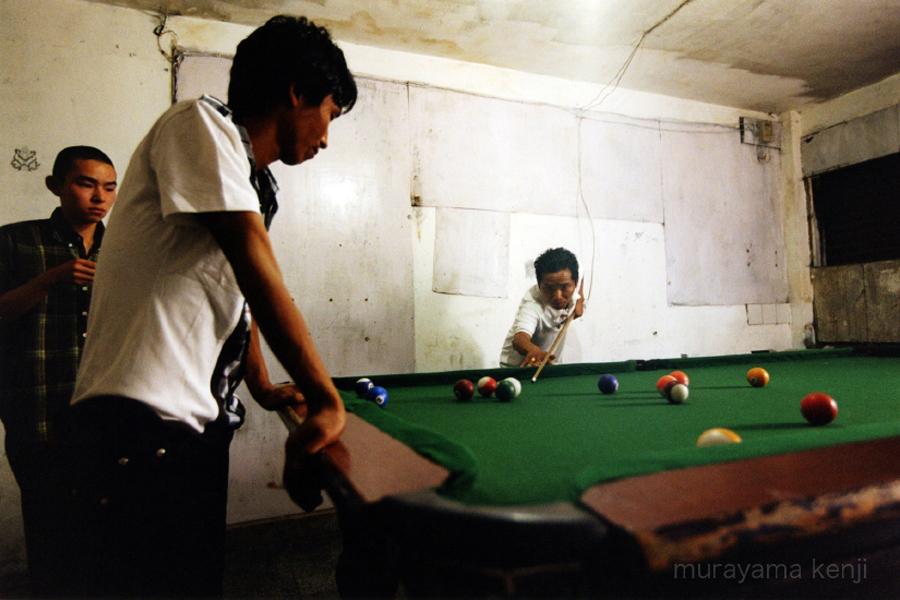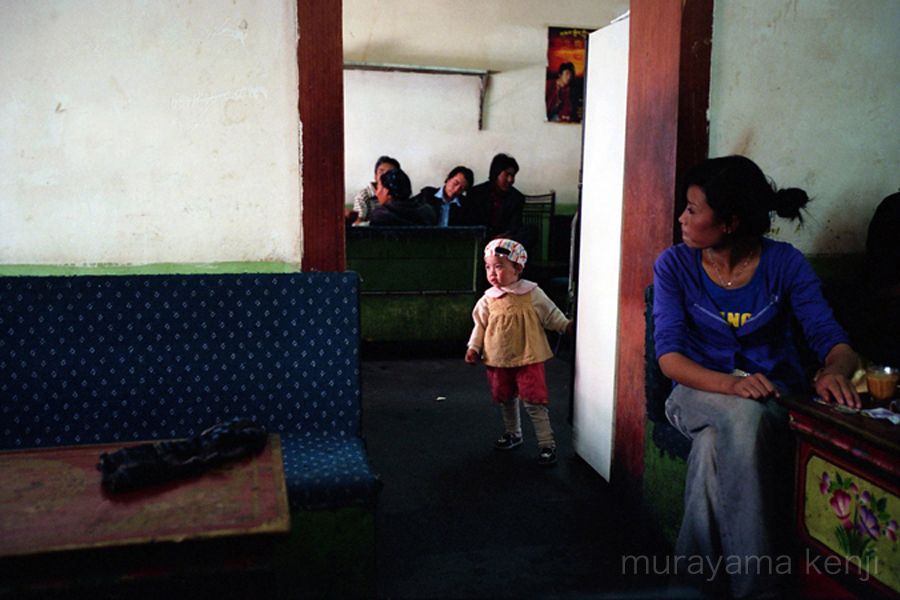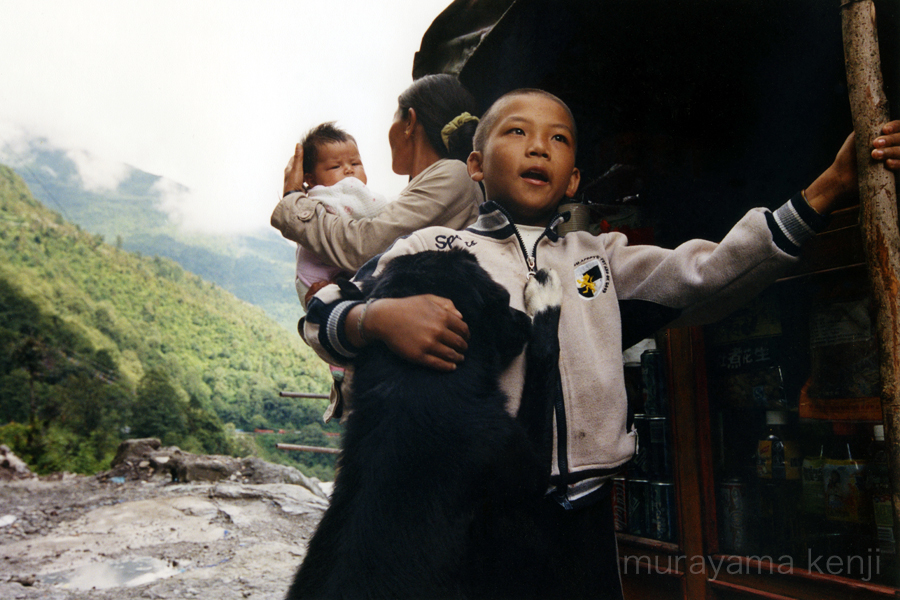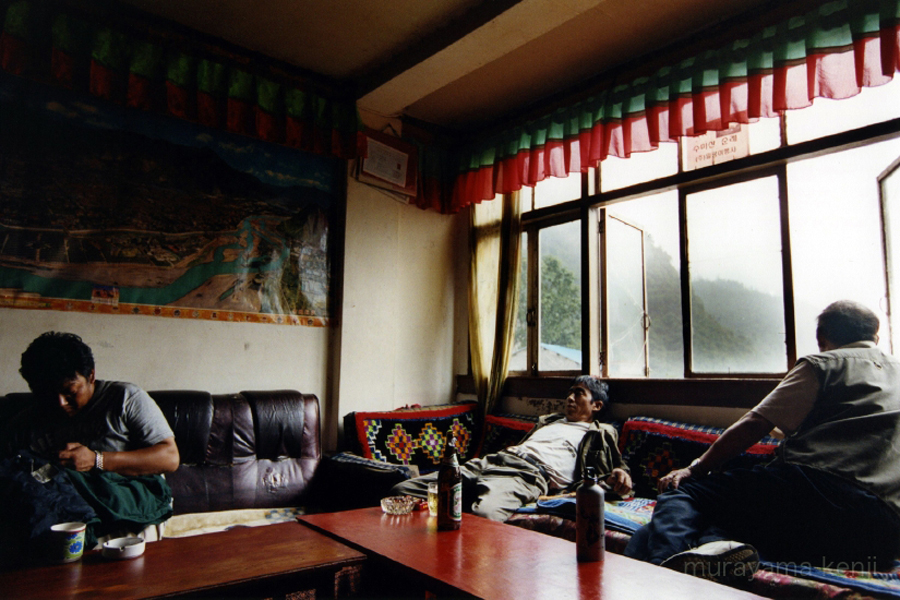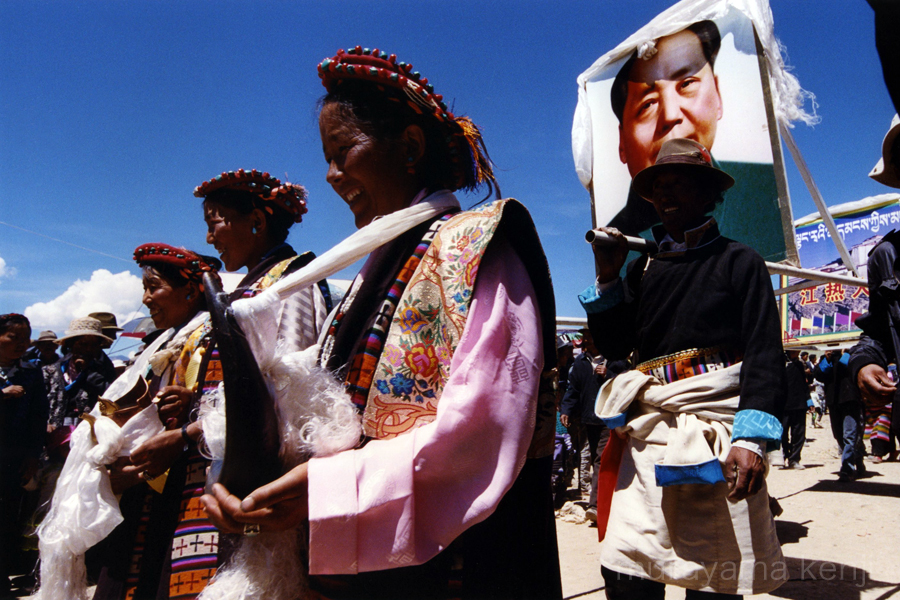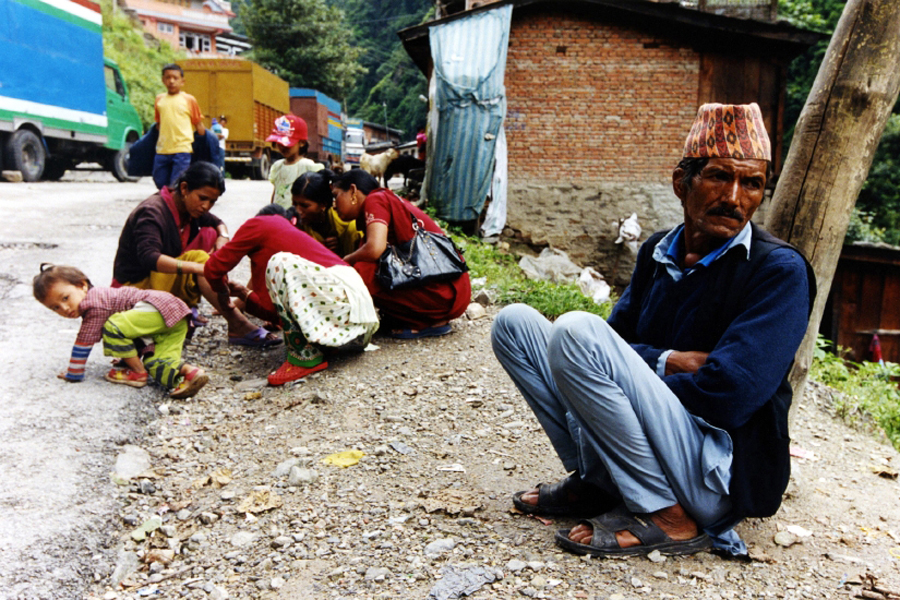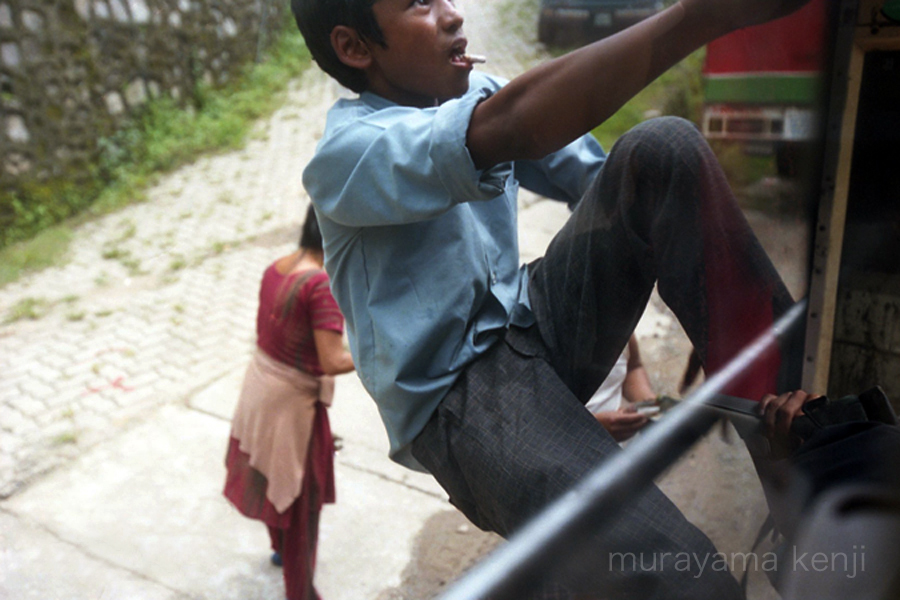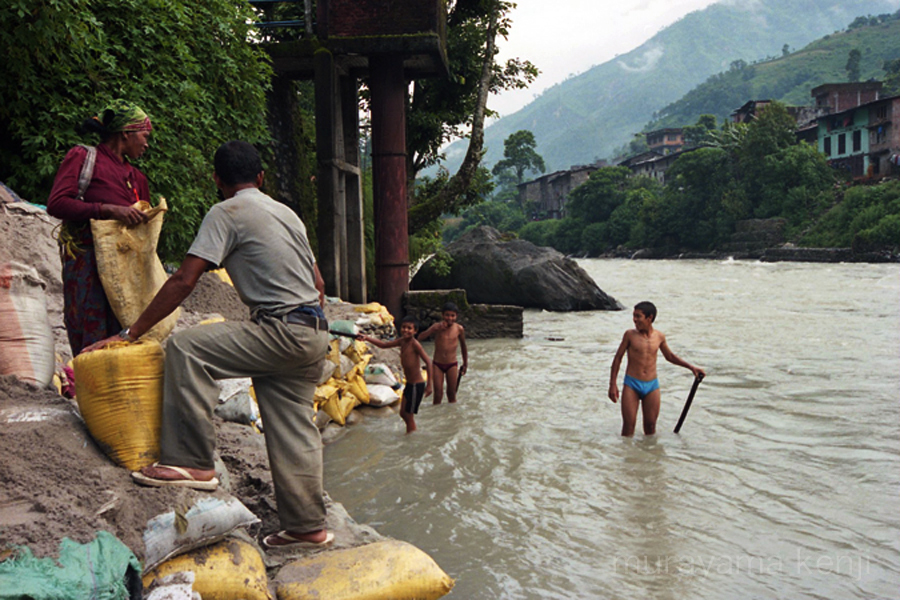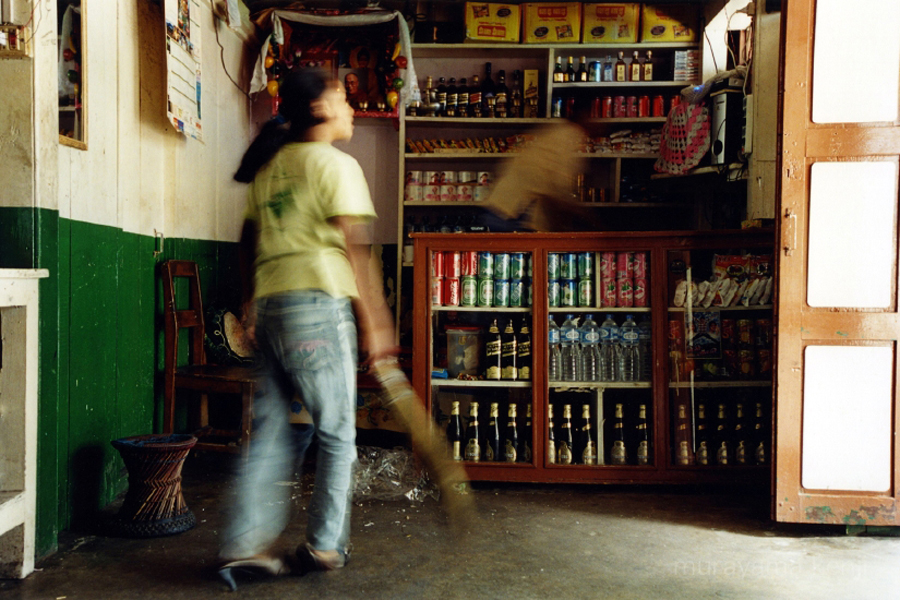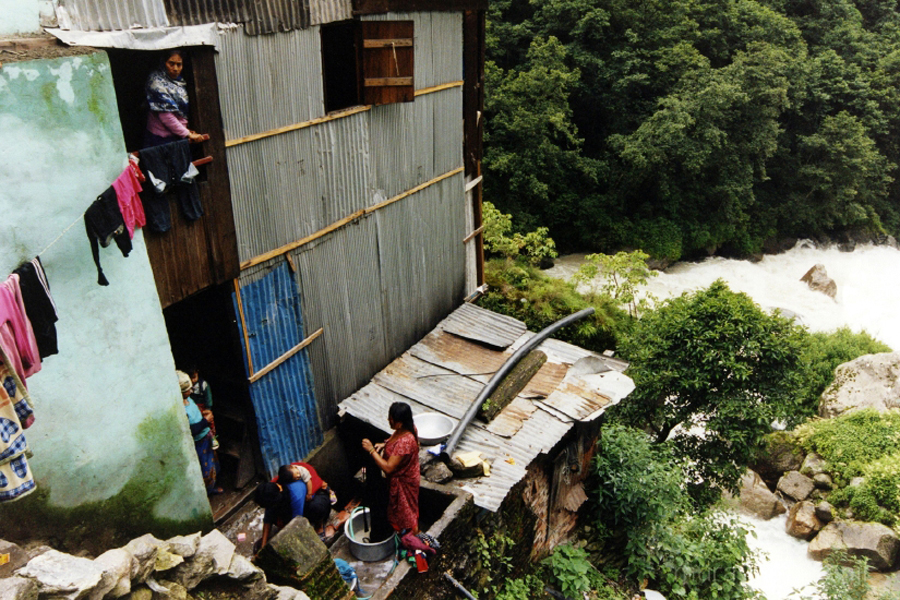国境の街 -Photographs from the region adjacent to the China border-
駅に隣接するホテルの部屋から砂の舞うプラットホームを眺めると、数頭のウシが寝そべっているのが見えた。ロータリーには斜めに傾いた台で一日中ビリヤードをしている人たちがいて、列車が到着したときだけ乗客の荷物を運んだり、食料を売ったりしていた。
モンゴル・ザミーンウード。崩れ落ちそうなほどの荷物を積んだジープやトラック、北京とウランバートルを結ぶ国際列車がただ通過していく、国境のイミグレーションのためだけに存在するような街。地面が舗装されているのは駅の周辺だけで、街全体が砂に覆われているような印象を受けた。郊外のほうへ歩いて行くと、モンゴルの伝統的な移動式住居であるゲルに住み、馬や羊の世話をして暮らす人々がいた。
近代化され都市機能が整備された街の中心には大型の商業施設が建てられ、街自体が急速に拡大していた中国側の国境の街、内蒙古自治区・二連浩特から初めて国境を越えた時、砂の上にフェンスを立てただけの国境のラインが、これほど民族や文化を分けるのだと感じた。国境は、地域の人々からはほとんど意識されることなく存在し、同時にはっきりと境界を形成していた。まるで海のように。
それから私は中国国境に接する街を巡り、写真を撮る旅を続けた。その中で、国境のすぐ向こう側に異なるイデオロギーを持った人間が生活している事実に触れ、国家や民族の成り立ちの複雑さを実感していった。歴史や文化の違う人間が共存していくことは本当に難しく、対立は起こり得るものだと感じた。だからこそ、戦争や紛争を起こさない、起こさせないためには多大な努力が必要なのだと思う。
以前の私は、国境なんて地図上に人間がラインを引いただけで、そんなものはなくなってしまえばいいと思っていた。しかしいま、国境の街で撮影した写真をまえに思う、国境のない世界はいまの世界よりも本当に優れているのだろうかと。それは答えのない疑問なのかもしれない。
「国境」について考えることは「国家」とは何かを考えることであり、「グローバリゼーション」に対する問いだと思っている。
When I had a glance at the railway’s platform from the hotel’s room, I saw some cows lying down. A few men had been playing billiards at the leaning billiards table all day long. They carried baggage for passengers and sold some foods only when train stopped by.
Zamiin-Uud, MONGOLIA. This town exists as if only due to the immigration. Jeep and trucks, international trains from Beijing to Ulanbatorem only pass by the town. Roads around the station are covered by asphalt, but, I got an impression as if the whole town had been covered by sand. I went away from the center of the town, and I saw some guys with horses. They had lived in the traditional houses, Mongolian Gers, looking after sheep and horses.
Erlianhot of Inner Mongolia is located on the border between the People’s Republic of China and the Mongolian People’s Republic. It’s a highly modernized city which has large commercial facilities in the center of town. When I transited the border the first time from Erlianhot, I was deeply impressed. The border which is only a “fence” on the sand had divided clearly ethnic groups or culture. Clearly, the border existed. People who live there do not pay attention to it, but, there is no doubt that it forms a boundary at the same time. As if it was the “sea”.
Then, I visited towns bordering on China, and took many pictures. In this journey, I found there are people who have a different ideology beyond the boundary. I realized the complexity of formation of a nation and people. It’s so hard that people having historically and culturally different backgrounds live peacefully together. To avoid collisions is difficult, too. Therefore, we have to do everything we can not to provoke conflicts or wars, I think.
I used to think a border is just an artificial line on a map. Furthermore, I used to think we had better abandon such a thing. But, now, in front of these pictures, I ask myself if the borderless world is really superior to the present world. It might not be a question which has a clear answer.
To think “a border” is to think “a nation”. And it’s the same question thinking about “globalization”, I think.
Copyright (C)2015 Kenji Murayama All Rights Reserved.





